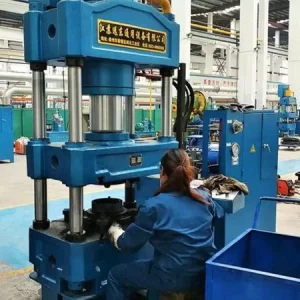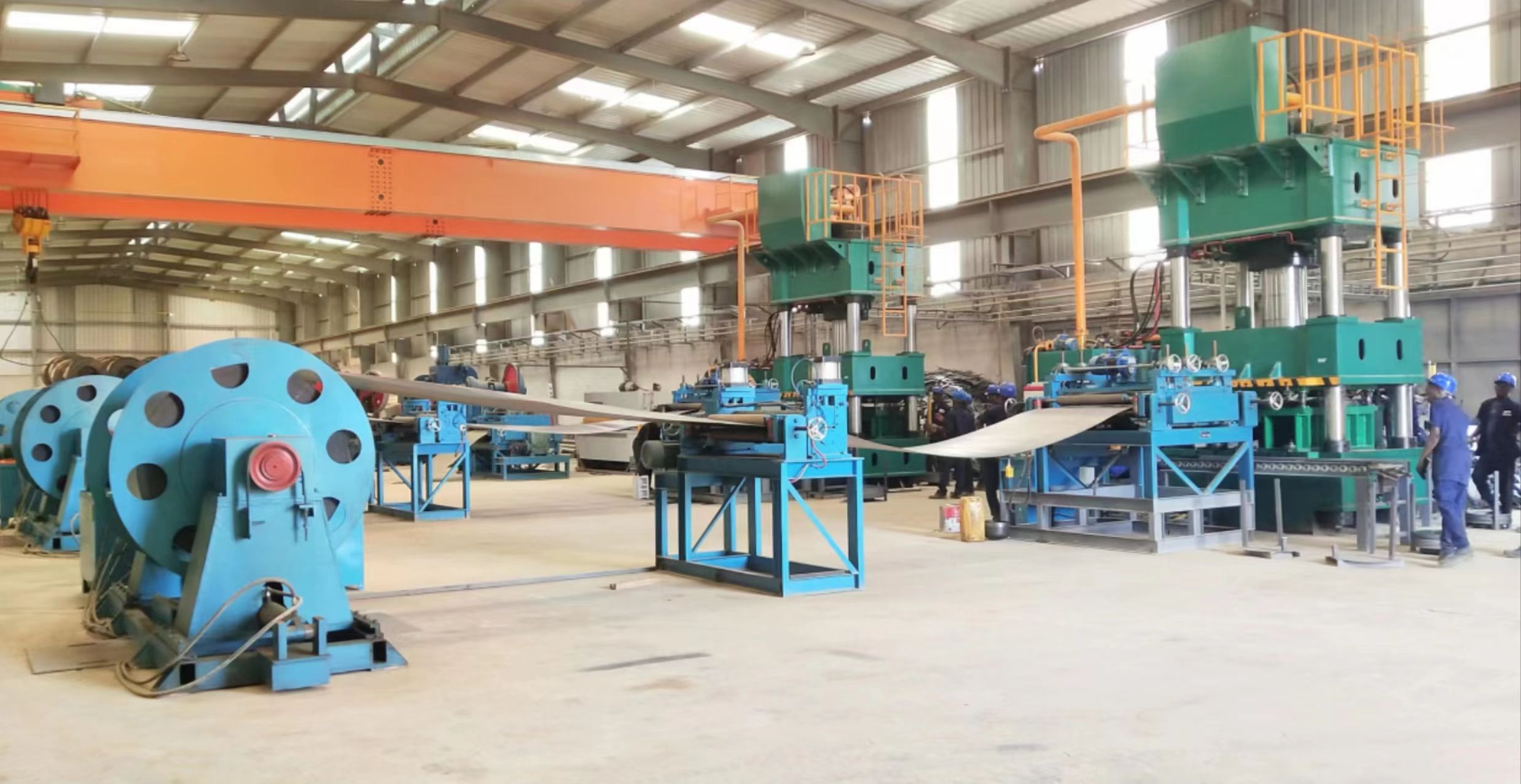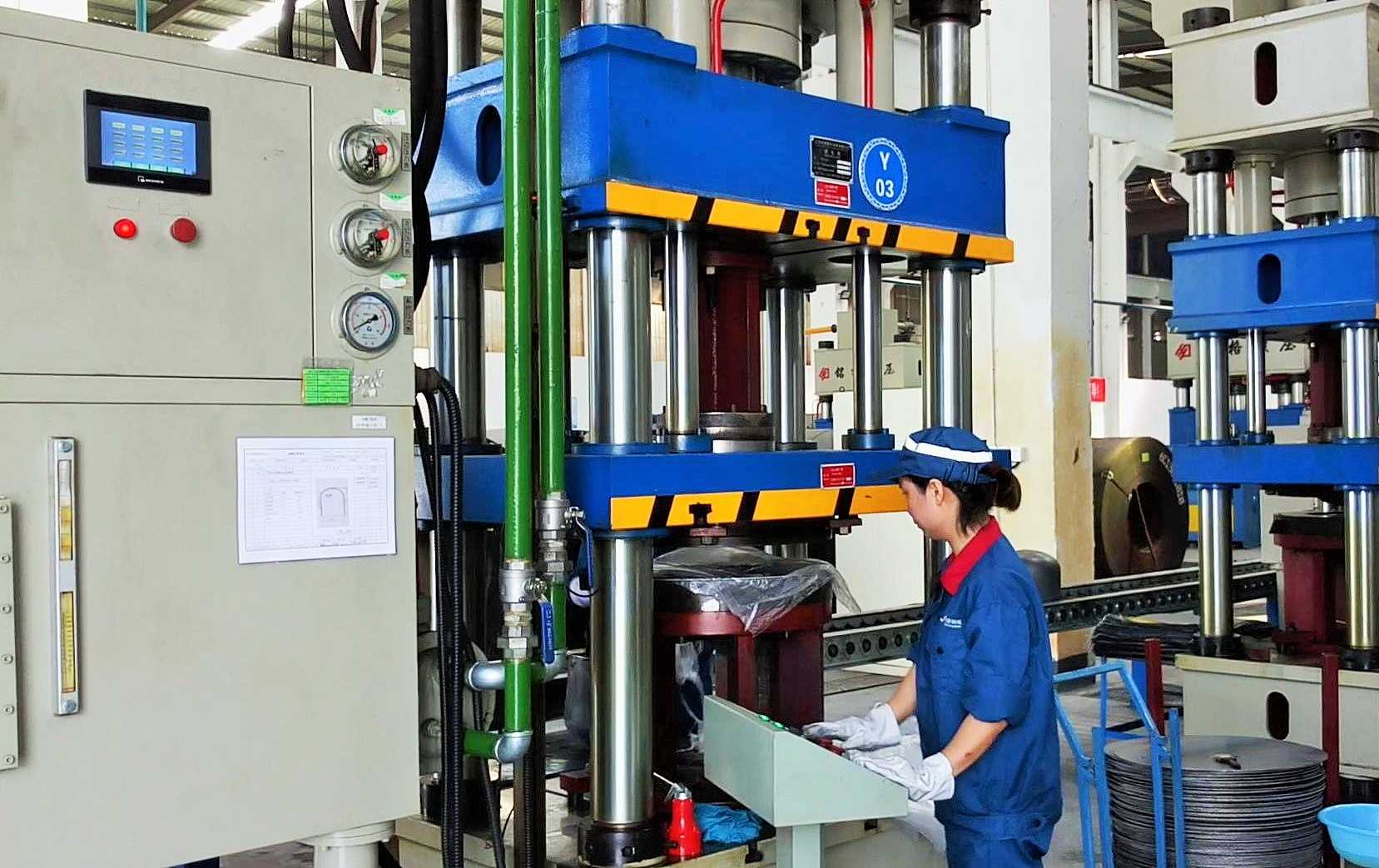Introduction
In the world of liquefied petroleum gas (LPG) cylinder manufacturing, the base forming machine is an unsung hero. This piece of machinery plays a critical role in the production process, ensuring that each cylinder is structurally sound, safe, and reliable. The impact of base-forming machines on LPG cylinders is profound, influencing everything from production efficiency to product safety and overall industry standards. This article delves into the intricacies of base-forming machines, their importance in LPG cylinder manufacturing, and the various ways they shape the industry.
Understanding LPG Cylinders
LPG cylinders are ubiquitous in both domestic and industrial settings. They are used for cooking, heating, and powering various appliances and machinery. Given their widespread use, these cylinders must be manufactured to the highest standards to ensure safety and reliability. The manufacturing process of an LPG cylinder is complex and involves several critical stages, one of which is base forming.
The Anatomy of an LPG Cylinder
An LPG cylinder comprises several components, including the body, valve, and base. The base is a crucial part of the cylinder as it provides stability and support. It ensures that the cylinder can stand upright and withstand the pressures and stresses encountered during transportation and use. A well-formed base is essential for the overall integrity and functionality of the cylinder.
The Role of Base Forming Machines
Base-forming machines are specialized pieces of equipment designed to shape the base of LPG cylinders. They are responsible for creating a uniform, sturdy, and precise base that meets industry standards. These machines utilize advanced technology to ensure that each base is formed accurately, contributing to the overall quality and safety of the cylinder.
The Evolution of Base Forming Machines
The development of base-forming machines has undergone significant advancements over the years. From manual operations to fully automated systems, these machines have evolved to meet the growing demands and stringent standards of the LPG industry.
Early Base Forming Techniques
In the early days of LPG cylinder manufacturing, base forming was a labor-intensive process. Workers manually shaped the bases using hammers and anvils. This method was not only time-consuming but also prone to inconsistencies and errors. The lack of precision often resulted in bases that were not uniform, compromising the stability and safety of the cylinders.
The Advent of Mechanical Base Forming Machines
The introduction of mechanical base-forming machines marked a significant milestone in the LPG cylinder manufacturing process. These machines automated the base forming process, significantly improving efficiency and accuracy. Mechanical base-forming machines use hydraulic or pneumatic systems to shape the bases, ensuring uniformity and consistency.
The Rise of Automated Base Forming Machines
The latest advancements in base-forming technology have led to the development of fully automated base-forming machines. These machines leverage computer-aided design (CAD) and computer-aided manufacturing (CAM) technologies to achieve unparalleled precision. Automated base-forming machines can process large volumes of cylinders with minimal human intervention, enhancing productivity and reducing the risk of errors.
Benefits of Advanced Base Forming Machines
The impact of advanced base-forming machines on LPG cylinders is multifaceted. These machines offer numerous benefits that contribute to the overall quality, safety, and efficiency of the manufacturing process.
Enhanced Precision and Consistency
One of the primary advantages of modern base-forming machines is their ability to achieve high levels of precision and consistency. Automated systems ensure that each base is formed to exact specifications, eliminating variations that could compromise the cylinder’s stability. This precision is critical in maintaining the structural integrity of the cylinders and ensuring their safe use.
Improved Production Efficiency
Advanced base-forming machines significantly enhance production efficiency. Automated systems can process large volumes of cylinders in a shorter amount of time compared to manual or mechanical methods. This increased efficiency translates to higher production rates, allowing manufacturers to meet growing demands without compromising on quality.
Reduced Labor Costs
The automation of the base forming process reduces the need for manual labor, resulting in cost savings for manufacturers. While the initial investment in advanced base-forming machines may be substantial, the long-term savings in labor costs and increased productivity make it a worthwhile investment. Additionally, automation minimizes the risk of human error, further enhancing the overall quality of the cylinders.
Enhanced Safety Standards
Safety is paramount in LPG cylinder manufacturing, and advanced base forming machines play a crucial role in ensuring high safety standards. The precision and consistency achieved by these machines reduce the likelihood of defects and structural weaknesses in the bases. This, in turn, minimizes the risk of cylinder failures, leaks, and accidents, safeguarding both manufacturers and end-users.

The Impact on Industry Standards
The adoption of advanced base forming machines has had a significant impact on industry standards and regulations. As these machines enable manufacturers to produce high-quality cylinders consistently, industry standards have become more stringent, ensuring that only the best products reach the market.
Compliance with International Standards
LPG cylinders are subject to rigorous international standards and regulations to ensure their safety and reliability. Advanced base-forming machines help manufacturers comply with these standards by producing cylinders that meet or exceed the required specifications. This compliance is essential for gaining certifications and approvals necessary for exporting cylinders to global markets.
Setting New Benchmarks for Quality
The precision and consistency achieved by modern base forming machines have set new benchmarks for quality in the LPG industry. Manufacturers are now able to produce cylinders with superior structural integrity, enhancing their reputation for quality and reliability. This focus on quality has also led to increased competition among manufacturers, driving further advancements in technology and processes.
Environmental Considerations
In addition to quality and safety, environmental considerations have become increasingly important in the LPG industry. Advanced base-forming machines contribute to sustainability efforts by reducing material waste and energy consumption. These machines are designed to optimize the use of resources, minimizing the environmental impact of the manufacturing process.
Challenges and Future Developments
While the impact of advanced base-forming machines on LPG cylinders is overwhelmingly positive, there are challenges and areas for future development that need to be addressed.
High Initial Investment
The high cost of advanced base forming machines can be a barrier to adoption for some manufacturers, particularly small and medium-sized enterprises. The initial investment includes not only the purchase of the machinery but also the costs associated with installation, training, and maintenance. Finding ways to reduce these costs or provide financing options could help more manufacturers benefit from this technology.
Technological Advancements
The rapid pace of technological advancements presents both opportunities and challenges. Staying up-to-date with the latest developments requires ongoing investment in research and development. Manufacturers must continuously innovate to remain competitive and meet evolving industry standards. Future advancements in base forming technology could include further automation, integration with artificial intelligence, and enhanced data analytics to optimize the manufacturing process.
Workforce Adaptation
As automation becomes more prevalent, there is a need for the workforce to adapt to new technologies. Workers must be trained to operate and maintain advanced base-forming machines, requiring investment in education and training programs. Ensuring that the workforce is equipped with the necessary skills will be crucial for the successful implementation of these machines.
Conclusion
The impact of base forming machines on LPG cylinders is undeniable. From enhancing precision and consistency to improving production efficiency and safety standards, these machines have revolutionized the manufacturing process. As technology continues to advance, the role of base-forming machines in the LPG industry will only become more significant. By addressing the challenges and embracing future developments, manufacturers can continue to produce high-quality cylinders that meet the demands of a global market while ensuring the safety and satisfaction of their customers. The evolution of base-forming machines is a testament to the ongoing commitment to innovation and excellence in the LPG cylinder manufacturing industry.




